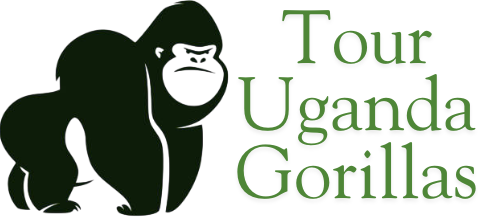Rwanda
- Home
- Rwanda
Rwanda is one of the most sought-after gorilla trekking destinations in the world, renowned for its well-organized treks, luxury tourism infrastructure, and breathtaking mountain scenery. Gorilla tourism is a central part of Rwanda’s conservation success story and contributes significantly to both wildlife protection and community development.
Mountain Gorilla Population in Rwanda
Rwanda shares the Virunga Mountains with Uganda and the Democratic Republic of Congo. These volcanic highlands are home to around one-third of the world’s remaining mountain gorillas. As of the most recent counts, Volcanoes National Park shelters approximately 300 mountain gorillas, including 12 habituated families available for trekking.
Each day, only 8 permits are issued per group to minimize disturbance and ensure the gorillas remain wild and well-protected. On average, Rwanda receives around 15,000–20,000 gorilla trekkers annually.
Government Support & Tourism Strategy
The Rwandan government has positioned gorilla tourism as a cornerstone of its eco-tourism model. Significant investment in infrastructure, strict conservation regulations, and community revenue-sharing initiatives (10% of permit fees go directly to surrounding communities) have made Rwanda a leading example of conservation through tourism.
Volcanoes National Park – The Only Gorilla Trekking Site in Rwanda
Volcanoes National Park is located in Rwanda’s northwest, in the Musanze District, about 2.5 hours by road from Kigali International Airport. This makes it the most accessible gorilla trekking park for international travelers.
Distance & Access
From Kigali to Volcanoes National Park: ~110 km (2.5–3 hours by road)
Road Type: Fully paved, scenic drive through terraced hillsides and rural villages
Transport Options: Private transfer, tour vehicle, or car hire (4WD recommended)
Accommodation Options
Lodging ranges from budget guesthouses to some of Africa’s top luxury eco-lodges, many with views of the Virunga Volcanoes. Options include:
Luxury: Bisate Lodge, One&Only Gorilla’s Nest, Singita Kwitonda
Mid-range: Five Volcanoes Boutique Hotel, Mountain Gorilla View Lodge
Budget: Kinigi Guest House, La Locanda, Fatima Hotel (in Musanze town)
Staying near Kinigi or Musanze ensures a short transfer to the park headquarters on trekking day.
Best Time to Visit
Dry Seasons (Best): June–September, December–February
These months offer better trail conditions and clearer mountain views.Wet Seasons: March–May, October–November
Treks are still possible but trails are slippery. Permits remain limited, so booking early is still necessary.
Safety & Security
Rwanda is widely regarded as one of the safest countries in Africa for travelers. Volcanoes National Park is secure and patrolled by trained rangers and anti-poaching units. Trekking groups are always accompanied by armed escorts for safety in the forest.
Local people are welcoming, and tourism is highly valued and protected.
What to Wear for a Gorilla Trek in Rwanda
Long-sleeved shirts and trousers – To avoid stinging nettles and biting insects.
Rain jacket or poncho – The park is a rainforest and sudden showers are common.
Gardening gloves – Useful for support on muddy or thorny trails.
Sturdy hiking boots – Waterproof and with strong grip for volcanic slopes.
Hat and sunglasses – For sun protection at higher altitudes.
Gaiters (optional) – Help keep out mud and insects.
Essential Packing Tips
Small backpack with hydration system or water bottles
Snacks for energy (lightweight and eco-friendly packaging)
Sunscreen and insect repellent
Camera with rain cover (no flash photography allowed)
Face mask (may be required to protect gorillas from human disease)
Gorilla Families in Volcanoes National Park
Rwanda currently has 12 habituated gorilla families that tourists can visit. Each family is unique in size, composition, and personality. The Rwanda Development Board (RDB) assigns groups on trekking day based on physical fitness, availability, and preference when possible.
Overview of Rwanda’s Gorilla Families
| Gorilla Family | Characteristics | Trail Difficulty |
|---|---|---|
| Susa A | One of the largest and most famous groups; originally studied by Dian Fossey. Known for twins and a large number of members. | Strenuous (longest hike) |
| Karisimbi (Susa B) | A split from Susa A; lives at higher altitudes on Mt. Karisimbi. | Very Strenuous |
| Sabinyo | Easiest to access; small group with the oldest known silverback, Guhonda. | Easy |
| Amahoro | Peaceful group; name means “peace.” Beautiful views but steep trails. | Moderate |
| Umubano | Split from Amahoro. Fewer individuals but close-knit. | Moderate |
| Agashya (Group 13) | Active group often roaming farther distances. Originally had 13 members. | Moderate to Hard |
| Kwitonda | Originally from DR Congo. Known for long hikes into bamboo forests. | Hard |
| Hirwa | Originally from Uganda’s Mgahinga, now resettled in Rwanda. Known for its playful energy. | Moderate |
| Bwenge | Featured in the movie Gorillas in the Mist. Often seen on open slopes. | Hard |
| Ugenda | Known to roam frequently, so finding them may take longer. | Hard |
| Muhoza | A relatively newer family often assigned to first-time trekkers. | Easy |
| Pablo | One of the largest families, with several blackbacks and juveniles. | Moderate to Hard |
📝 Note: Group assignments are made early in the morning during the pre-trek briefing. If you have a preferred group, mention it ahead of time. While not guaranteed, Tour Uganda Gorillas, through its partnership with Alpha Adventure Safaris, will do its best to align your trekking preferences when arranging permits and logistics.
